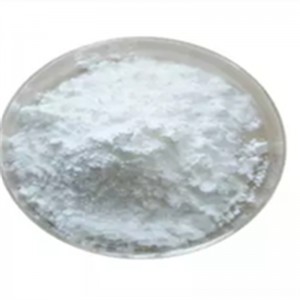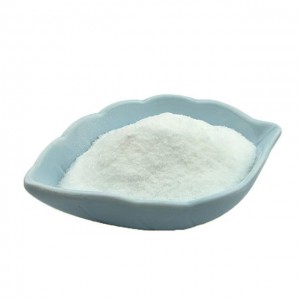| Basic Information | |
| Product name | ceftriaxone sodium |
| CAS No. | 74578-69-1 |
| Appearance | White to off-white powder |
| Grade | Pharma Grade |
| Storage | 4°C, protect from light |
| Shelf Life | 2 years |
| Package | 25kg/Drum |
Product Description
The chemical formula is C18H16N8Na2O7S3, and its antibacterial spectrum is similar to that of cefotaxime sodium. It has strong effects on Escherichia coli, Klebsiella pneumoniae, indole positive Proteobacter, influenza bacilli, Serratia marcescens, meningococci, and Neisseria gonorrhoeae. Pneumococcus, streptococcus, and Staphylococcus aureus are moderately sensitive to this product and have a certain effect on Pseudomonas aeruginosa. Enterococcus, methicillin-resistant Staphylococcus aureus, and most fragile pseudomonas are resistant to this product.
Clinical Use
Ceftriaxone sodium is a β-lactamase–resistantcephalosporin with an extremely long serum half-life.Once-daily dosing suffices for most indications. Two factorscontribute to the prolonged duration of action ofceftriaxone: high protein binding in the plasma and slowurinary excretion. Ceftriaxone is excreted in both the bileand the urine. Its urinary excretion is not affected byprobenecid. Despite its comparatively low volume ofdistribution, it reaches the cerebrospinal fluid in concentrationsthat are effective in meningitis. Nonlinear pharmacokineticsare observed.
Ceftriaxone contains a highly acidic heterocyclic systemon the 3-thiomethyl group. This unusual dioxotriazine ringsystem is believed to confer the unique pharmacokineticproperties of this agent. Ceftriaxone has been associatedwith sonographically detected “sludge,” or pseudolithiasis,in the gallbladder and common bile duct. Symptoms ofcholecystitis may occur in susceptible patients, especiallythose on prolonged or high-dose ceftriaxone therapy. Theculprit has been identified as the calcium chelate.
Ceftriaxone exhibits excellent broad-spectrum antibacterialactivity against both Gram-positive and Gram-negativeorganisms. It is highly resistant to most chromosomally andplasmid-mediated β-lactamases. The activity of ceftriaxoneagainst Enterobacter, Citrobacter, Serratia, indole-positiveProteus, and Pseudomonas spp. is particularly impressive. Itis also effective in the treatment of ampicillin-resistant gonorrheaand H. influenzae infections but generally less activethan cefotaxime against Gram-positive bacteria and B.fragilis.







